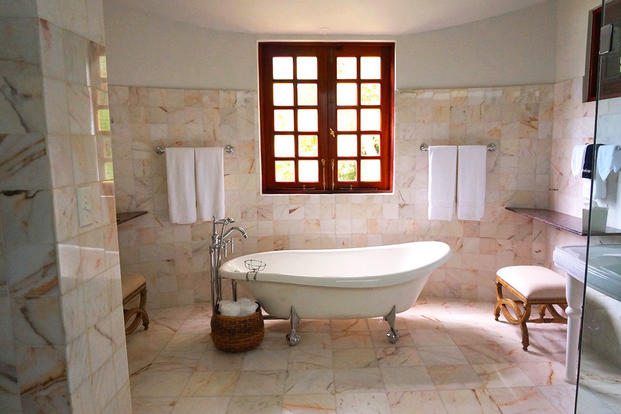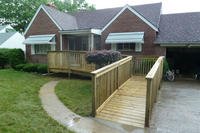You’ve qualified for a VA home loan and found the perfect house. Great! But while your finances have met muster, your future home will have to pass its own tests.
Purchasing a home can be very exciting. You create a list of features you need, and some that would be nice to have, and start scanning potential neighborhoods for a home that meets your needs. And like any knowledgeable buyer, you have already been prequalified for a VA loan, so you know around how much home you can afford.
But if you’re going to use a VA mortgage to buy your home, the property will have to undergo a VA appraisal. This is part of the loan qualifying process that includes a valuation of the property for fair market value, as well as an assessment to see if the home meets the VA’s minimum property requirements (MPRs). This appraisal can only be performed by a VA-certified appraiser. The VA appraisal ensures that your loan amount is justified and that the home you’re about to live in is safe, sound, and sanitary according to VA MPR standards. The last thing you need is for your home to make you or your family sick or worse.
An approved VA lender can guide you through the home buying process, which includes ordering a VA appraisal. Once you have a signed purchase contract in hand, your lender can order an appraisal. The first-available VA appraiser will be dispatched to the house to run through a checklist of requirements to make sure all the criteria are met. Any condition compromising the safety, sanitation, or structural soundness of the property must be resolved before closing. You should understand that the VA appraisal does not replace the need for a thorough and professional home inspection, which unlike the appraisal protects you not the VA or lender.
So, just what does safe, sound, and sanitary mean within the context of the VA appraisal and MPRs? Let’s explore them one by one.
What is “Safe” by VA Standards?
The old adage “safety first” applies to your home. Homes purchased with VA loans are intended to be primary residences. They must be safe. Does the stairway have handrails? Is the fireplace properly ventilated? Is the electrical wiring up to code? In fact, the VA appraiser is going to check a whole gamut of requirements to assure that the property you’ve chosen to call home is approved for occupancy.
If your home fails to meet one or more of the VA standards, you may not be able to purchase the home with a VA loan.
A Sound Structure Means What?
VA loan appraisals include a top-to-bottom examination of the building’s structure and functionality. One common pain point is the roof, which must be in good condition and have at least five years of useful life left. Generally, the structure needs to be sturdy. That includes stable walls, no broken windows, functional doors, working appliances, and adequate access to crawl spaces and floor joists that allow for maintenance of plumbing and ductwork. The source of any water leaks will need to identified, sealed, and any resulting damage repaired. And any property financed with a loan backed by the VA needs footings and a foundation. In fact, the home must be properly attached to a permanent foundation ― this goes for manufactured homes, too.
A structurally sound home is important to the overall enjoyment of your new home.
How Does the Appraiser Determine if a Home is Sanitary?
In general, each unit must have sanitary facilities and enough space for suitable living, sleeping, cooking and dining. That seems like a lot of room for interpretation. However, one thing is clear ― your home should not be a health hazard.
That means each home must have an approved method for sewage disposal. It’s preferred that it is hooked into the public sewer system if possible. However, septic tanks and community sewage disposal systems are okay if they work properly. The VA is also alright with pit privies in areas where they are the only option, but it has to be installed up to local health authority standards. In places where no local health authority exists, then U.S. Public Health Service requirements apply.
Regarding water and wells, each unit must have its own constant supply of drinkable water, as well as hot water for kitchens and bathrooms. When possible, the VA likes the home to use city water. However, well water is allowed if it’s drinkable from the source and meets local health authority requirements (if present.) Otherwise, the U.S. Environmental Protection Agency’s (EPA) guidelines apply. Shared wells must be able to put out enough water for each property simultaneously, with a permanent easement that allows for access for maintenance and repairs.
Another issue that may affect sanitation has to do with water leaks. Any time you have seepage from the ground or a plumbing leak, you have the potential for the development of mold, which can be harmful to your health. Your VA appraiser is going to check the property for the growth of toxic molds and fungi.
Of course, these are just some of the things a VA appraiser checks to make sure the property you want to purchase is safe, sound, and sanitary for you and your family. While the VA MPRs represent general requirements for property VA eligibility, individual lenders may have additional requirements.
Ready to Get Started?
If you're ready to get started, or just want to get more information on the process, the first step is to get multiple rate quotes with no obligation. You can then discuss qualifications, debt to income ratios, and any other concerns you have about the process with the lenders.










